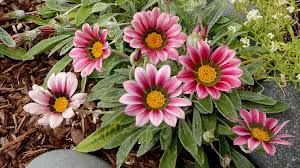Creating a vibrant and beautiful garden while facing the challenges of drought conditions requires thoughtful selection of plants. Drought-tolerant flowers are a perfect solution for maintaining a flourishing garden with minimal water usage. These hardy plants not only survive but thrive in dry conditions, making them ideal for gardens in arid regions or during hot, dry spells. In this comprehensive guide, we’ll explore the best drought-tolerant flowers to enhance your garden’s beauty and resilience.
Understanding Drought-Tolerant Flowers

Drought-tolerant flowers are plants that have adapted to withstand prolonged periods of low water availability. They often possess deep root systems, waxy leaves, or other specialized features that help them conserve moisture. Choosing drought-tolerant flowers not only conserves water but also reduces the need for frequent maintenance.
Benefits of Drought-Tolerant Flowers
- Water Conservation: Reduces the need for frequent watering, which is essential in areas with limited water resources.
- Low Maintenance: Requires less upkeep compared to water-hungry plants.
- Environmental Impact: Helps in maintaining ecological balance by reducing water consumption.
- Resilience: These plants are typically more resistant to pests and diseases, making them a reliable choice for gardeners.
Top Drought-Tolerant Flowers for Your Garden
Here’s a curated list of the best drought-tolerant flowers that will add color and texture to your garden while thriving in dry conditions:
1. Lavender (Lavandula spp.)
Lavender is renowned for its aromatic fragrance and beautiful purple blooms. This perennial is exceptionally drought-tolerant once established. Its silvery foliage and spikes of purple flowers make it a versatile choice for garden borders, herb gardens, and containers.
- Sun Requirements: Full sun
- Soil Type: Well-drained, sandy soil
- Watering Needs: Minimal once established
- Additional Benefits: Attracts pollinators and has culinary uses
2. Blanket Flower (Gaillardia spp.)
Blanket flowers are vibrant and hardy, with bright red, yellow, and orange blooms that resemble a blanket of color. They are excellent for adding a splash of warmth to your garden. These perennials are tolerant of dry conditions and poor soil.
- Sun Requirements: Full sun
- Soil Type: Well-drained soil
- Watering Needs: Low; water only during prolonged dry periods
- Additional Benefits: Attracts butterflies and is deer-resistant
3. Black-Eyed Susan (Rudbeckia hirta)
Black-eyed Susans are iconic for their cheerful, daisy-like flowers with dark centers and golden-yellow petals. They thrive in sunny spots and are known for their resilience in drought conditions. These perennials are also effective in attracting pollinators.
- Sun Requirements: Full sun to partial shade
- Soil Type: Well-drained soil
- Watering Needs: Moderate; drought-tolerant once established
- Additional Benefits: Long-blooming and low-maintenance
4. Coneflower (Echinacea spp.)
Coneflowers, or Echinacea, are well-loved for their daisy-like flowers with prominent centers and a range of colors including pink, purple, and white. They are robust and can withstand periods of drought. Coneflowers also offer medicinal benefits and attract beneficial insects.
- Sun Requirements: Full sun
- Soil Type: Well-drained soil
- Watering Needs: Low; tolerant of dry spells
- Additional Benefits: Attracts pollinators and has medicinal properties
5. Yarrow (Achillea millefolium)
Yarrow is a hardy perennial with fern-like foliage and clusters of small flowers in colors ranging from white and yellow to pink and red. It is exceptionally drought-tolerant and thrives in poor soil conditions, making it a valuable addition to a low-maintenance garden.
- Sun Requirements: Full sun
- Soil Type: Well-drained soil
- Watering Needs: Low; very drought-resistant
- Additional Benefits: Attracts butterflies and has medicinal uses
6. Sedum (Sedum spp.)
Sedum, also known as stonecrop, is a succulent that performs exceptionally well in dry conditions. It has fleshy leaves that store water and produce clusters of star-shaped flowers in late summer and fall. Sedum is ideal for rock gardens, ground cover, and containers.
- Sun Requirements: Full sun to partial shade
- Soil Type: Well-drained soil, including sandy and rocky soils
- Watering Needs: Minimal; drought-resistant
- Additional Benefits: Attracts pollinators and provides year-round interest
7. Russian Sage (Perovskia atriplicifolia)
Russian Sage is a perennial with aromatic, silver-gray foliage and spikes of lavender-blue flowers. It is known for its ability to thrive in dry conditions and adds a touch of elegance to garden beds and borders.
- Sun Requirements: Full sun
- Soil Type: Well-drained soil
- Watering Needs: Low; very drought-tolerant
- Additional Benefits: Attracts bees and butterflies
8. Coreopsis (Coreopsis spp.)
Coreopsis, or tickseed, produces cheerful, daisy-like flowers in shades of yellow, pink, and red. This plant is easy to grow and thrives in dry conditions, making it a perfect choice for adding color to a low-maintenance garden.
- Sun Requirements: Full sun
- Soil Type: Well-drained soil
- Watering Needs: Low; drought-resistant
- Additional Benefits: Attracts pollinators and provides long-lasting blooms
9. Aster (Aster spp.)
Asters are known for their vibrant, star-shaped flowers that bloom in late summer and fall. They are versatile and can handle drought conditions once established. Asters come in various colors, including purple, pink, and white, making them a great addition to any garden.
- Sun Requirements: Full sun to partial shade
- Soil Type: Well-drained soil
- Watering Needs: Low; drought-tolerant
- Additional Benefits: Attracts bees and butterflies
10. Gaura (Gaura lindheimeri)
Gaura, also known as bee blossom, is a perennial with delicate, butterfly-like flowers that flutter on tall stems. It thrives in dry conditions and adds a whimsical touch to garden beds and borders.
- Sun Requirements: Full sun
- Soil Type: Well-drained soil
- Watering Needs: Low; very drought-resistant
- Additional Benefits: Attracts pollinators and has a long blooming season
Tips for Growing Drought-Tolerant Flowers

- Soil Preparation: Ensure your garden soil is well-drained to prevent waterlogging. Incorporate organic matter to improve soil structure and enhance moisture retention.
- Mulching: Apply a layer of mulch around your plants to help retain soil moisture, reduce evaporation, and suppress weeds.
- Watering: Water your plants deeply and infrequently to encourage deep root growth. Avoid shallow, frequent watering, which can lead to weak roots.
- Spacing: Provide adequate spacing between plants to ensure good air circulation and reduce competition for resources.
- Fertilizing: Use a balanced, slow-release fertilizer to support healthy growth. Over-fertilizing can lead to excessive foliage growth at the expense of flowers.
Conclusion
Incorporating drought-tolerant flowers into your garden is a smart choice for maintaining a beautiful and sustainable landscape, especially in regions prone to dry conditions. These hardy plants not only withstand drought but also offer vibrant colors, unique textures, and minimal maintenance. By selecting the right flowers and following best gardening practices, you can create a thriving garden that remains resilient in the face of water scarcity. Embrace the beauty and practicality of drought-tolerant flowers and enjoy a flourishing garden year after year.



